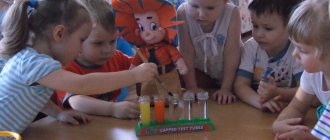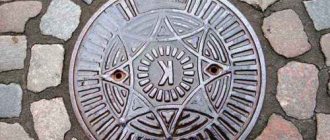Cognitive and research activity as a natural need of a child
Have you noticed how your child looks with interest at a piece of wood floating in a rain stream or how he is sincerely surprised by the frosty patterns on the winter windows? And numerous questions in the process of watching birds or milk running onto the stove: “Why?”, “Where from?”, “Why?”, “How?”. This behavior of a child is natural and only confirms that he, due to his age, is a researcher. Genetically predetermined search activity creates conditions for the child’s mental development to initially follow the path of self-development.
It should be noted that children are in special conditions: they are bombarded with information every day, and their knowledge is extremely limited.
What is important for a child’s development is not the amount of knowledge transferred to him, but how he appropriates it. This is why the exploratory nature of reflection and action is so important.
The preschooler observes, reasons, and his own discoveries arise. It is this kind of experience that is firmly assimilated by the child, and he subsequently uses it when faced with a familiar situation.
Younger preschoolers show the simplest cognitive activity. By interacting with objects, observing what is happening, asking questions, they assimilate primary information. This is their – and very valuable – way of understanding the world.
Every year the interests of children deepen. Older preschoolers are no longer just interested, but are trying to get to the bottom of the truth. Their activity is aimed at finding a solution, testing experimentally the properties of objects, and unraveling natural phenomena. Actually, the formation of cognitive and research activities is taking place.
The adult’s task is to stimulate the child’s natural search activity and develop his research abilities.



